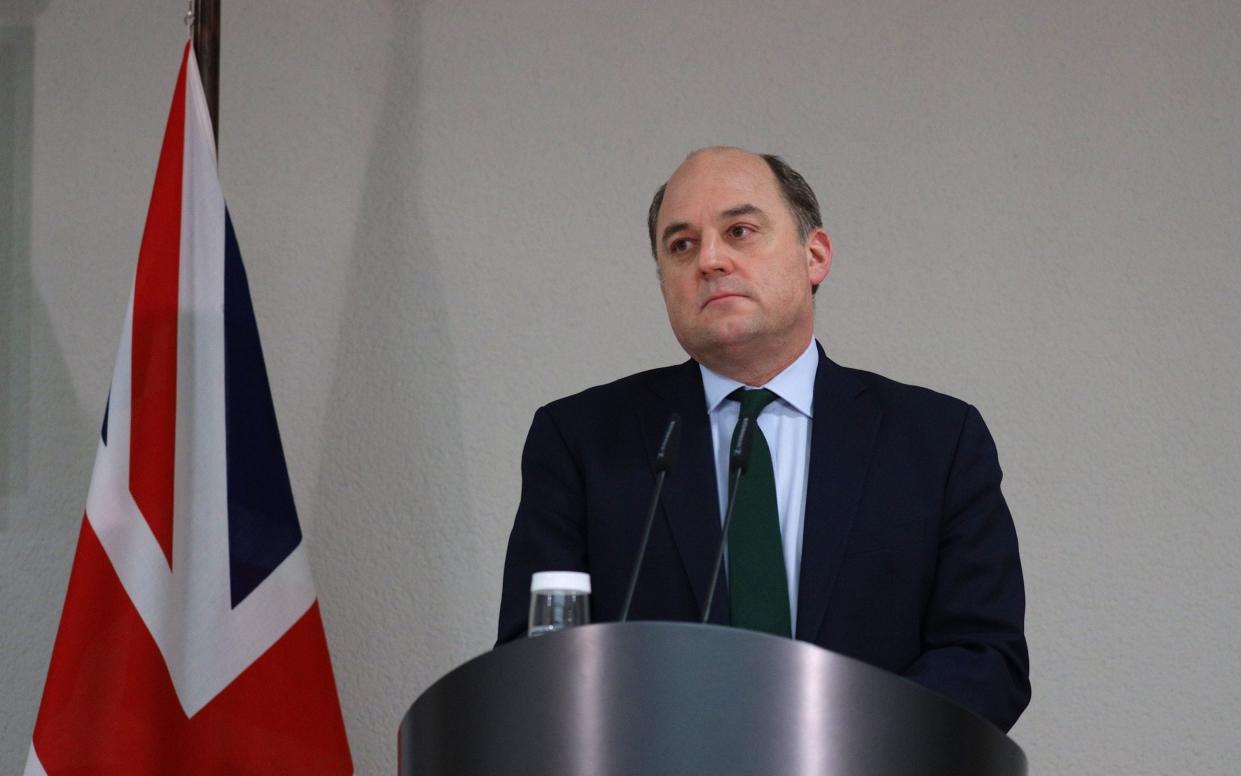UK troops set to join defence of Europe ahead of potential Russian invasion of Ukraine

- Oops!Something went wrong.Please try again later.
Britain is considering a deployment of hundreds of military personnel to eastern Europe in advance of Russia potentially invading Ukraine, The Telegraph has learned.
Government sources confirmed that “very advanced discussions” were under way, after reports emerged from Washington that the US, UK and a handful of other Nato allies were in talks about bolstering their military presence on the coalition’s eastern flank.
It is thought a public announcement on new deployments from a smaller grouping of partners within the alliance could come as soon as Thursday.
Jens Stoltenberg, Nato’s secretary-general, on Wednesday declared the alliance was “prepared for the worst” after sending its first written response to Russia’s European security demands.
He warned that fresh Russian deployments in Belarus, which Moscow argues are planned military exercises, could be “used as a disguise to launch an attack”.
Ben Wallace, the Defence Secretary, travelled to Nato HQ in Brussels on Wednesday to discuss the Ukraine crisis with Mr Stoltenberg, and also visited his Dutch and German counterparts.
It came as the American broadcaster CNN reported that battle groups of 1,000 troops each could be offered by the US, UK and some other Nato allies.
However, UK government sources signalled that any British deployment was likely to number in the low hundreds at most, rather than 1,000 personnel.
It is understood that units from the Army, Royal Navy and RAF are all under consideration to be dispatched, but no final decisions have been made.
Some government sources were downbeat on the prospect of Britain sending any extra personnel. Sending additional supplies of weaponry and equipment remain other options.
Britain already has around 850 troops stationed in Estonia and about 150 in Poland under Nato missions. The UK has sent anti-tank weapons to Ukraine and offered military training to its forces.
The US, Spain, France, the Netherlands and Denmark have all indicated they are planning, or willing, to boost their military presence on the fringes of eastern Europe before any Russian invasion.
The UK Government has been increasingly keen to focus on the looming threat of war in Ukraine, amid a deepening domestic political crisis over partygate.
In a statement to the Commons on Tuesday, Boris Johnson indicated that Britain was prepared to strengthen its presence in eastern Europe only in response to a Russian invasion of Ukraine. A day earlier, government sources similarly insisted to The Telegraph that no additional deployment was likely before Moscow undertook such an act.
The active talks now underway in Whitehall about a pre-emptive deployment therefore mark a significant hardening of the UK’s position.
Tobias Ellwood, the Tory chairman of the Commons foreign affairs committee, welcomed the proposal. “The idea you send in troops after invasion is daft,” he said. “If we want to shore up Nato territory, limiting any incursion to non-Nato Ukraine, we need to move personnel and equipment now.”
Antony Blinken, the US secretary of state, announced that he would speak again in the coming days to Sergei Lavrov, Russia’s foreign minister, after a meeting in Geneva last Friday, amid a separate diplomatic initiative led by France.
Mr Blinken renewed an offer on “reciprocal” measures to address mutual security concerns, including reductions of missiles in Europe and transparency on military drills and Western aid to Ukraine.
He refused, however, to acquiesce to Russia’s demand for a guarantee against Ukraine ever being admitted to Nato.
Another of the US’s top diplomats said Washington was preparing for Vladimir Putin to invade Ukraine by mid-February.
Wendy Sherman, the US deputy secretary of state, said Mr Putin may wait until just after he attends the opening ceremony of the Winter Olympics in Beijing.
Giving the US's most detailed expectations so far on Mr Putin's timeline, she said: “I have no idea whether he's made the ultimate decision, but we certainly see every indication that he is going to use military force sometime perhaps (between) now and the middle of February.”

